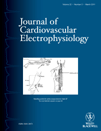Combining Shock Reduction Strategies to Enhance ICD Therapy: A Role for Computer Modeling
K. Volosin reports honoraria and consulting from Medtronic, Atricure, St. Jude Medical. D. Exner reports consulting and research support from Medtronic and St. Jude Medical, honoraria from Boston Scientific and Sorin/ELA. M. Wathen reports honoraria and consulting from Medtronic, Boston Scientific, Transoma, Biotronik. L. Sherfesee and J. Gillberg are employees of Medtronic. A. Scinicariello is a former employee of Medtronic and has a financial/ownership interest in the company.
Abstract
Combining Shock Reduction Strategies to Enhance ICD Therapy. Objectives: To develop a computer model to test shock reduction strategies such as antitachycardia pacing and shock withholding for supraventricular rhythms, oversensing, and nonsustained ventricular tachycardia.
Background: While the implantable cardioverter defibrillator (ICD) can reduce mortality, inappropriate ICD shocks remain a limitation. Randomized trials provide evidence of efficacy, but they are not always practical. Computer models provide an alternative approach, and are particularly useful when evaluating multiple interventions.
Methods: A computer model was developed using clinical data and validated in a large ICD data set (EMPIRIC). After validation, the model was applied to 736 adjudicated clinical episodes from the ICD arm of Sudden Cardiac Death Heart Failure Trial (SCD-HeFT).
Results: The shock reduction strategies hypothetically reduced the number of VT/VF shocked episodes in SCD-HeFT by an estimated 59% (from 952 observed to 395 modeled shocks, probability of >0.999) at detection duration settings (18 of 24 intervals). The percentage of patients experiencing inappropriate shocks over 5 years was decreased by 15% (23.5–8.4%), and the number of shocks for non-VT/VF episodes was decreased from 423 to 77 (82% reduction). The percentage of patients receiving shocks for VT/VF was reduced from 30.7% (SCD-HeFT) to 26.1% with the addition of ATP. Extended detection (24 of 32 or 30 of 40 intervals) showed modest additional improvement compared to 18 of 24 intervals.
Conclusion: Computer modeling is able to predict the results of a known clinical trial and demonstrate that shock reduction strategies have the potential to significantly reduce inappropriate and unnecessary ICD shocks versus the mandated programming used in SCD-HeFT. (J Cardiovasc Electrophysiol, Vol. 22, pp. 280-289, March 2011)




